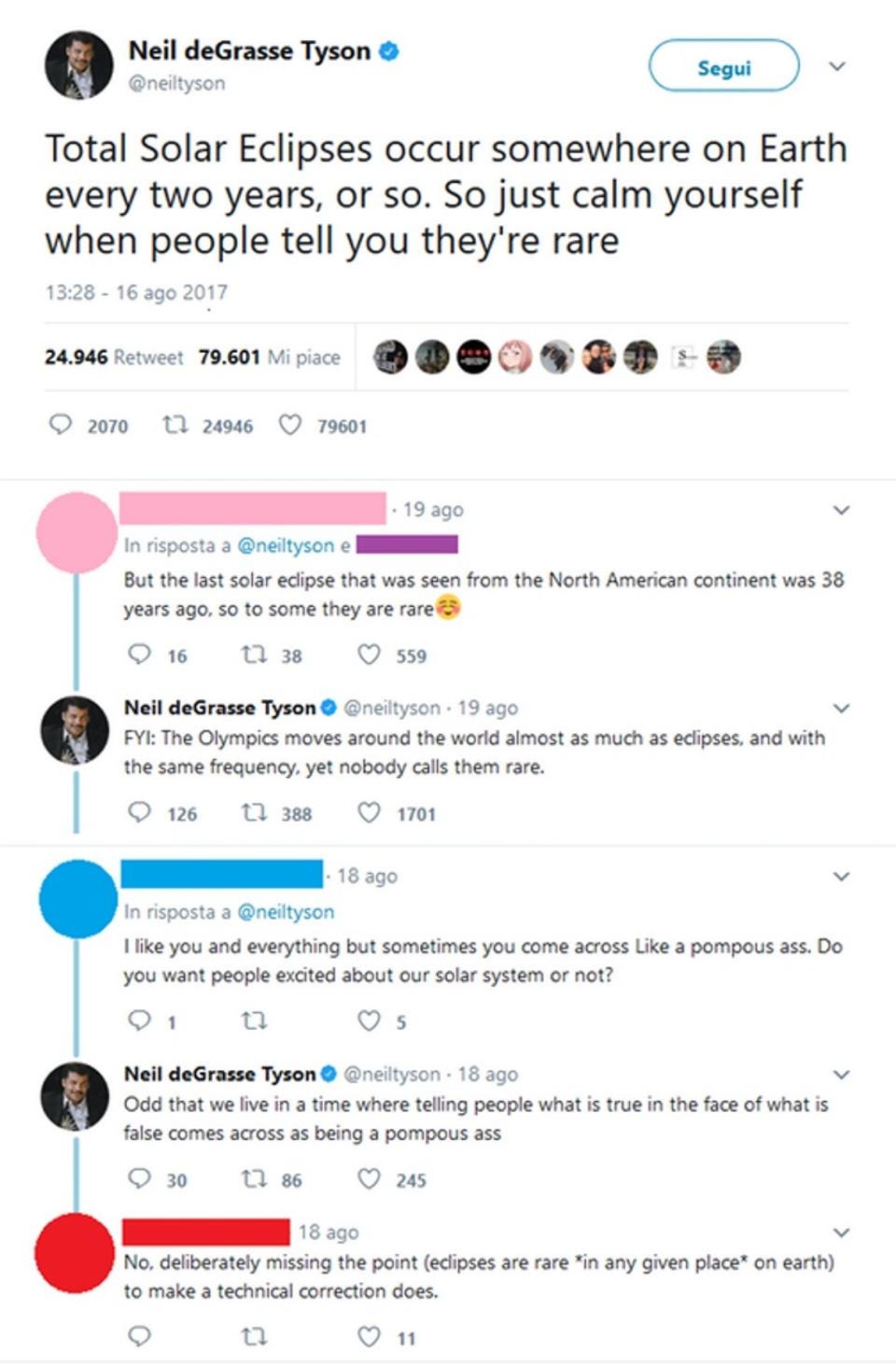
Source: https://medium.com/starts-with-a-bang/no-neil-degrasse-tyson-squashing-curiosity-and-wonder-is-never-okay-5199ac712b6e
It made me think of another viewpoint I saw among serious eclipse-chasers: that if you weren’t going to totality, you might as well stay inside.

Source: greatamericaneclipse.com
This is something we addressed in the teacher training we did at the museum before the eclipse. Our community was split – partly in totality, mostly not. Our school district has 60,000 students, and it’s not reasonable to expect that all of them will be able to move to the path of totality on eclipse day. So we trained all of the teachers on both cases – totality and partial eclipse. One is absolutely cooler than the other, and worth moving to if you can, but if you can’t move, it’s still a once-in-a-lifetime observation and very memorable for a kid! Let’s not discourage anyone from going outside on eclipse day!
A friend observed the eclipse in a public place. Afterward, she shared the story of hearing a man talking to a physicist. The man said, “I don’t have much education, but seeing that eclipse makes me want to learn EVERYTHING.” Isn’t that what we want? What if that man had been made to feel like he wasn’t worthy of his excitement?
Back to NDT. He is one of the greatest advocates for science education, especially space science, that we’ve ever had. But there’s always been something about his approach that bothered me. I tried to listen to his podcast, Startalk Radio. He and his co-hosts sometimes made the coolest science seem like an “old boys’ club” where, if you didn’t get the inside jokes, you didn’t belong. This bothered me because I know that science educators are in a constant uphill battle to (1) not alienate people and (2) increase conversation with people who might not know much about certain topics.
Imagine this conversation:
Person on the street: “The Earth is flat”
Science educator: “Well, that’s stupid and you’re stupid.”
Did any education happen? No. Here’s an alternative:
Person on the street: “The Earth is flat”
Science educator: “It looks like it from here, doesn’t it? People believed that Earth was flat for a long time, until they could travel across the oceans. Now we can even send space probes out to take pictures and show us what Earth looks like from far away. Now we know that it’s round.”
That’s overly simplified, of course, and wouldn’t work with a “Flat-Earther” who is armed with non-science arguments and conspiracy theories. But it would work with a kid or a curious adult.
26% of the population thinks that the sun goes around Earth, instead of the other way around. This could demonstrate a lot of ignorance, a colossal failure in science education, or an opportunity to think about how we deal with misconceptions. “That’s stupid and you’re stupid” doesn’t accomplish anything. Why not have a conversation about the early development of solar system models? It wasn’t all that long ago, in the scale of human history — only about 400 years. The first ten minutes or so of the documentary Telescope (Discovery Channel, Hulu) does a good job of showing this, and how difficult it was for astronomers like Copernicus and Galileo to have their heliocentric ideas accepted. But it’s part of how science works. We learn new things that make everyone go “Huh?” But then those new things might change the way we think.
Even Johannes Kepler, an astronomy pioneer who used math to plot the orbits of planets in the heliocentric model, thought that the moon was inhabited by big snakelike creatures with wings.
Indeed, there is no room for gatekeeping in science outreach. I try not to make fun of people for not knowing things. And I love this comic from xkcd.


